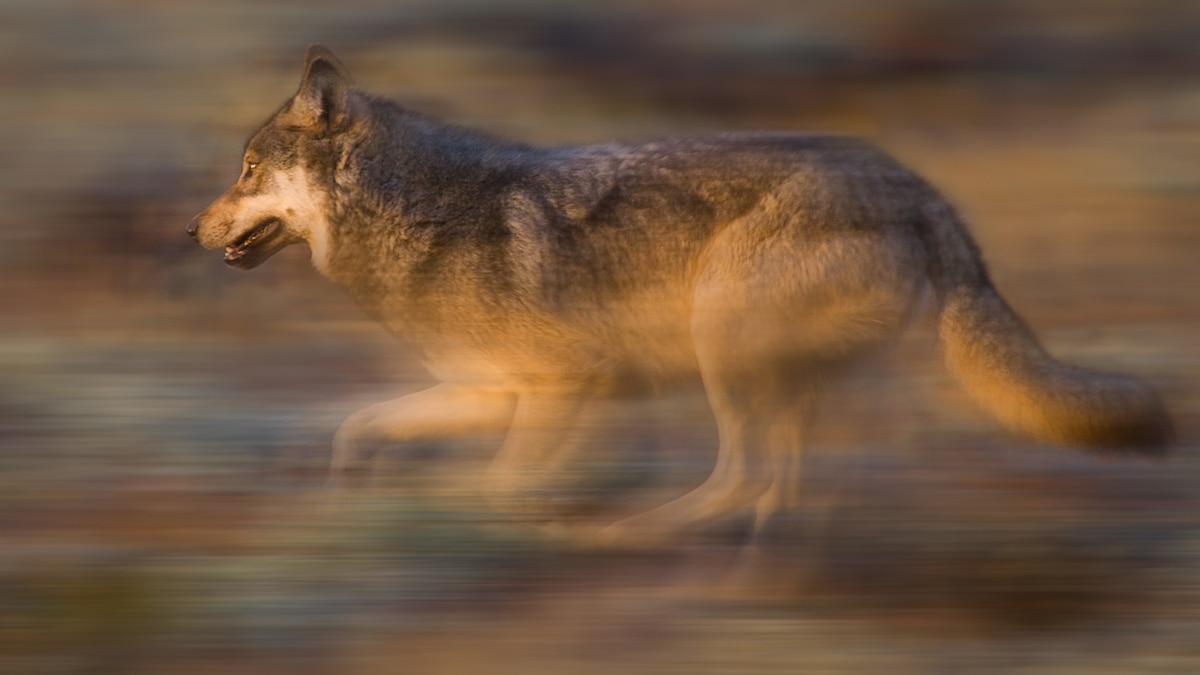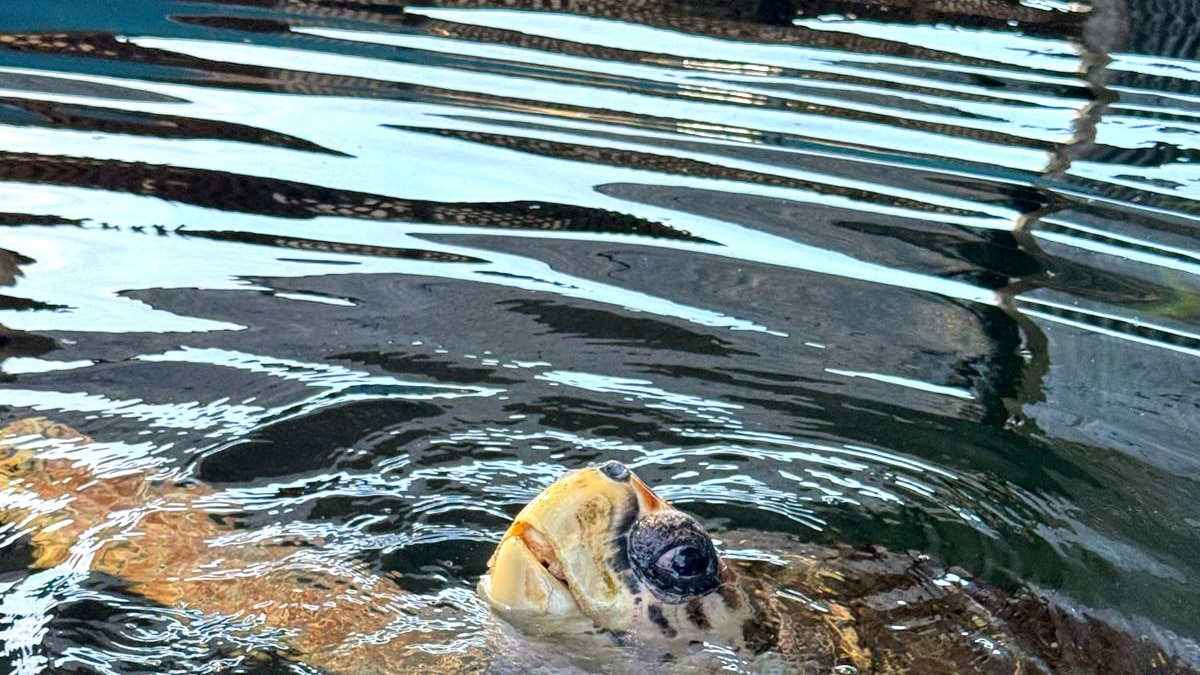Now Reading: Wolves have made a remarkable recovery in the U.S. So why are they being killed?
-
01
Wolves have made a remarkable recovery in the U.S. So why are they being killed?
Wolves have made a remarkable recovery in the U.S. So why are they being killed?

In a small town in Oregon when a father wolf went missing recently, no details were available about his death. All that’s known is that someone killed him, and, based on previous cases, it’s unlikely that the poacher will be apprehended.
After being hunted to eradication in Washington and Oregon in the 1930s and 1940s, the gray wolf’s recovery in these states has been slow. And decades after reintroductions and on-and-off federal protections, there are only about 430 individuals in both states combined. Now, they face another crisis: poaching.
In Washington, where the wolf population is estimated at 230, there have been about 22 confirmed or suspected cases of poaching since 2021. That’s compared to seven cases in the four years prior to 2021. In Oregon, authorities estimate nearly 40 wolves have been poached since 2021, more than twice the amount from the four years before. Experts say the trend could hinder the wolves’ chances at repopulation.
Because wolves are social animals, their deaths cause a ripple of consequences—particularly if a parent dies, because mates raise litters together. While a mother watches over new pups, her mate brings food back to the den to support the pack. If a breeding male dies, it leaves the mother in the lurch. Other members of the pack—such as yearlings from the prior spring—might lend a paw, but their investment in new siblings isn’t as high as a parent’s. It’s likely the remaining parent will eventually strike out to find a new partner and older offspring will disperse, dissolving the pack. In places like Oregon where there’s not many wolves to begin with, it’s harder to form new packs.
So, why is this happening? Criminal cases of wolf poaching often go unsolved, despite rewards of $10,000 or more for information leading to arrests, which occur infrequently. And the crisis is fueled by a long, drawn-out tension that exists between the endangered wolves and the human communities they live near, according to biologists and government experts. Some property owners don’t want the wolves on their land for fear of government intrusion in their lives, since the government tracks the animals. And local ranchers are often suspected in wolf deaths, since they want to protect their livestock.
“We really need a cultural shift around how we manage wildlife,” says Naomi Louchouarn, an anthrozoologist at Humane World for Animals in Washington, D.C. “As soon as [wolves] are no longer protected, [people’s] first instinct is to kill them.”
Aaron Bott, a wolf biologist for the Oregon Department of Fish and Wildlife in Prineville, knows how fraught the issue is—and a solution, at least anytime soon, seems unlikely. “Poaching has always been a concern with wildlife in general, but it’s particularly challenging for a controversial species,” says Bott. “There’s nothing more controversial than wolves.”
A divisive species
Bott was 5 years old when the gray wolves returned to Yellowstone in 1995. In that year, several groups of gray wolves were captured in Canada and released in central Idaho and Yellowstone National Park. Conservationists were excited to see the wolves return to their native habitats, while many ranchers were not.
Now, wolves have spread into more of their historical range, including the Pacific Northwest. Since the 1973 Endangered Species Act passed, they’ve found themselves on and off the list, with varying levels of state and federal protection. Currently, gray wolves are considered endangered in most of the contiguous U.S. It’s usually illegal to kill a wolf unless it’s done to defend a human, or in some cases, livestock. Some populations aren’t federally protected, though, such as those in Montana, Idaho, and Wyoming. In those areas, states have their own laws about wolf hunting. Wyoming, for instance, allows unlimited wolf hunting in the majority of the state.
Despite their protection in most states, wolf poaching still occurs, largely due to negative attitudes toward the canines. In 2023, there were 2.4 million cattle in Washington and Oregon, and about 56 were confirmed to be killed by wolves.
But their reputation is not entirely justified. For example, grizzly bears can cause more damage to livestock than wolves in some areas, Bott says, yet the tolerance for wolves is lower. “It’s noticeable when [wolves] attack and kill livestock, and it’s less noticeable when you have solitary carnivores [like bears] doing it,” he says. “That builds a lot of resentment.”
In Oregon and Washington, poaching has been on the rise. In other states, it’s unclear how poaching trends are changing. Research suggests that reported poaching incidents across the Northern Rockies might be underestimated by up to roughly half, making the numbers even larger. “It’s a huge concern,” says Francisco Santiago-Ávila, the science and advocacy director for Washington Wildlife First in Tacoma, Washington.
You May Also Like
Several studies have found poaching tends to go up after laws are passed that allow more liberalized killing, for example delisting from the Endangered Species Act or relaxing hunting rules. With a recent push for fewer wolf protections by some lawmakers and anti-wolf groups, experts are expecting a general bump in illegal killing in the future.
‘People take it into their own hands’
Poaching doesn’t come as a surprise to Matt Cyrus, a sixth-generation farmer who raises cattle in central Oregon and says a lack of trust in the Fish and Wildlife Service has led some ranchers to manage wolves in their own way. “People take it into their own hands,” Cyrus says. “I’m sure there’s a number of ranchers that shoot on sight, and they protect their livestock.” In some cases, a wolf pack will repeatedly return to prey on herds of livestock, like cattle and sheep. Not all hunts end in death, which means that animals can be left maimed. And even when no physical harm is done, livestock can become stressed when packs of wolves scare or chase them, possibly contributing to lower birth rates.
Wildlife managers recommend non-lethal methods to combat predation—such as strobing lights, which scare away the wolves, and guardian dogs to protect herds—but some ranchers say these methods aren’t effective enough. That creates a feeling of powerlessness, Cyrus says, and it feeds the feeling of distrust in agencies. For some, that distrust goes so far as to prevent them from reporting wolves seen on private property, he says. For some ranchers, it’s likely “easier to quietly make the problem go away.”
But multiple studies have shown that killing wolves doesn’t actually reduce livestock predation. Biologists aren’t quite sure why, but one theory comes back to wolves’ social structure. Killing one pack member could disrupt their ability to hunt wildlife together, making easy-to-target livestock an easier option, says Santiago-Ávila from Washington Wildlife First.
Ranchers aren’t the only suspects in the wolves’ demise. Hunters also play a role in poaching, says Suzanne Agan, an interdisciplinary wildlife biologist at American Public University. Agan, who is based in Rome, Georgia, has studied another species, the red wolf, which was also decimated in the U.S. The wolves were reintroduced in North Carolina in the 1980s.
In 2018, Agan canvased landowners whose property overlapped with the new wolf territory and found that the majority of the red wolves’ decline—a drop over the last two decades from around 150 wild wolves to 16—boils down to a small number of hunters. Many residents she spoke with weren’t against the wolves themselves, but they didn’t know the animals were being reintroduced back then, and they didn’t want the government on their land managing the new wolves as a result.
Rethinking wolves
State and federal agencies have taken several steps to combat poaching. In North Carolina, red wolves are tracked with bright orange collars to prevent mixups with coyotes, which are hunted legally. The U.S. Fish and Wildlife Service investigates reports of potential poaching, though it rarely leads to prosecution. Of the 30 or so poaching cases investigated in Washington, for instance, only a few have resulted in a conviction.
Louchouarn from Humane World for Animals believes a shift in how we manage wildlife is key. She suggests it could start by working more with ranchers to find creative solutions, like refining nonlethal deterrents as well as more research on reducing livestock stress when in the presence of wolves. That would help alleviate indirect, stress-related costs, like lower livestock birth rates.
It’s also important that both sides—pro- and anti-wolf—have the most accurate information about the animals. Both parties paint wolves as impressive hunters, for example. But Bott points out that in reality, they have dismal kill rates. And Humane World has reported that in the states where wolves live, they’re responsible for only 1 percent of cattle and sheep losses.
“The world looks very different than it did prior to wolf eradication, and because of that, we’re going to have a lot of challenges,” Bott says. “If we’re truly going to make progress conserving this species…we have to have facts straight.”






















